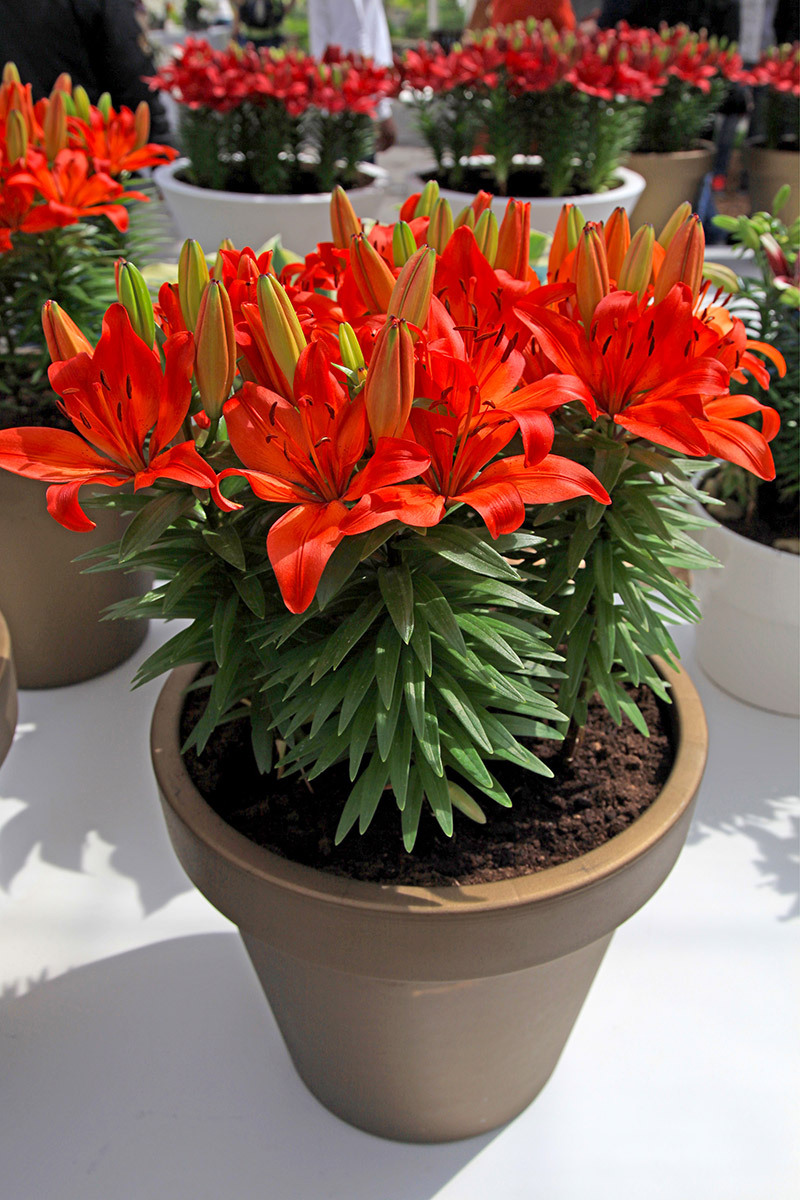Orchid Care: Elevate Your Indoor Gardening Skills
Posted on 14/08/2025
Orchid Care: Elevate Your Indoor Gardening Skills
Orchids are among the world's most captivating and diverse flowering plants. Their exotic blooms and architectural foliage make them a favorite for indoor gardeners of all levels. But while their beauty is undeniable, successful orchid care requires knowledge, patience, and the right techniques. In this comprehensive guide, you will discover how to elevate your orchid care skills and transform your indoor gardening experience with lush, thriving orchids.
Why Choose Orchids for Indoor Gardening?
Orchids offer a wide range of enchanting species and hybrids, making them a rewarding pursuit for both beginners and seasoned plant enthusiasts. Here are a few reasons why growing orchids indoors is such a popular choice:
- Diverse Colors and Shapes: Orchids display an array of unique forms and vibrant hues.
- Long-lasting Blooms: Many orchids have flowers that can last for weeks, sometimes even months.
- Air Purification: Like many houseplants, orchids help cleanse the air in your living spaces.
- Compact Growth: Numerous species are well-suited to limited indoor spaces, perfect for apartments and offices.

Understanding Orchid Varieties for Optimal Care
Orchid plants number over 25,000 species, but a handful dominate the world of indoor gardening. Recognizing your orchid type is a vital first step toward proper orchid maintenance.
Most Popular Orchid Types for Indoors
- Phalaenopsis (Moth Orchid): Renowned for their resilience and ease of care, making them ideal for beginners.
- Cattleya: Famous for their striking colors and large, fragrant blooms.
- Dendrobium: Versatile orchids with canes, some requiring a winter rest period.
- Oncidium (Dancing Lady): Characterized by delicate sprays of small flowers, often yellow and brown.
- Vanda: Known for their spectacular color and aerial roots, suitable for more experienced growers.
Each variety has its unique requirements, so proper orchid identification sets the foundation for success.
The Essentials of Orchid Care Indoors
To truly elevate your indoor gardening skills, focus on the key pillars of orchid care: light, temperature, humidity, watering, feeding, repotting, and pest management. Let's examine each aspect in detail.
Light: The Most Critical Factor in Orchid Care
Orchids are highly sensitive to their light environment. However, most indoor orchids thrive in bright, indirect sunlight. Harsh sun can burn their leaves, while too little light inhibits blooming. Here's how to strike the right balance:
- East or West-facing Windows: These exposures offer ideal, gentle morning or late afternoon light.
- Sheer Curtains: Diffuse direct sunshine to prevent leaf scorch.
- Artificial Lights: Use LED grow lights in darker rooms to supplement natural light.
Pro Tip: Orchid leaves should be grassy green--not dark green (too little light) or reddish (too much light).
Temperature: Creating the Right Orchid Microclimate
Most common orchids, especially Phalaenopsis, thrive in typical indoor temperatures:
- Day: 21-27?C (70-80?F)
- Night: 16-21?C (60-70?F)
A slight drop in nighttime temperature can help trigger blooming. Avoid placing your orchid in the path of drafts or near heating vents.
Humidity: Satisfying the Orchid's Tropical Needs
Orchids flourish in humidity levels of 40% to 60%. Most homes, especially during winter, have lower humidity. Elevate air moisture with these tips:
- Humidity Trays: Place your pots on trays filled with pebbles and shallow water.
- Room Humidifiers: Effective for maintaining consistent humidity.
- Misting: Lightly mist foliage (not flowers) in the mornings, allowing time to dry before evening.
Watering: The Art of Not Overwatering
Overwatering is the most common cause of orchid decline. Unlike traditional houseplants, orchids prefer their potting medium to dry out slightly between watering sessions. General guidelines:
- Water once a week: During active growth; less frequently in winter.
- Use Room-Temperature Water: Cold water can shock roots.
- Check Potting Medium: It should feel almost dry before rewatering.
- Drainage is Vital: Always empty standing water from saucers to prevent root rot.
Remember: It's safer to underwater than overwater an orchid!
Potting and Media: The Orchid's Unusual Home
Most indoor orchids are epiphytes, naturally growing on tree bark rather than in soil. Their roots require aeration, so standard potting soil is unsuitable.
- Special Orchid Mixes: Contain bark, sphagnum moss, charcoal, and perlite for airflow and drainage.
- Repot Every 1-2 Years: To refresh the medium and inspect root health.
- Transparent Pots: Aid root photosynthesis (important for Phalaenopsis) and better monitoring of moisture.
Feeding Orchids: When and How to Fertilize
Unlike foliage houseplants, orchids benefit from diluted feedings during their active growing period:
- Fertilize every 2-4 weeks: Use a balanced fertilizer at quarter strength.
- "Feed Weakly, Weekly": Apply diluted fertilizer in place of every other watering for robust growth.
- Reduce Feeding: In winter when growth slows.
Pest and Disease Management in Orchids
Vigilance keeps your orchid collection healthy. Watch for these common pests and problems:
- Mealybugs and Scale: Cottony or shell-like bumps on leaves, treat by wiping with neem oil or insecticidal soap.
- Spider Mites: Fine webbing, often on undersides. Increase humidity and treat with safe sprays.
- Fungal/Bacterial Spots: Remove affected leaves and improve air circulation to prevent recurrence.
Inspect orchids regularly and isolate new or suspect plants to protect your entire indoor garden.
Advanced Orchid Care Tips: Level Up Your Skills
After mastering the basics, you can take your orchid cultivation to the next level by focusing on advanced techniques.
Encouraging Rebloom in Orchids
Nothing is more rewarding than seeing your orchid rebloom. Here's how to trigger fresh flower spikes:
- Temperature Drop: For many varieties (including Phalaenopsis), providing a 10?F (5?C) nighttime drop for a couple of weeks can stimulate new flower spikes.
- Increase Light Slightly: Move the plant closer to the window during winter (but avoid direct sun).
- Continue Light Watering: Even after blooms fade, your orchid needs care to prepare for its next round of flowering.
Pruning Old Flower Spikes
Once flowering ends, cut the spike just above a visible node ("eye") for possible side shoots, or remove spent spikes altogether to encourage new growth from the base. Always use sterilized scissors to avoid infection.
Repotting Orchids Like a Pro
Repotting improves orchid health. Here's how:
- When to Repot: Every 1-2 years, or when potting medium breaks down.
- How to Repot: Gently remove the orchid, trim dead roots, and transfer to fresh orchid mix in a slightly bigger pot.
- Aftercare: Water sparingly for a week to allow roots to adjust.
Multiplying Orchids: Propagation Methods
Orchid propagation at home is possible with practice:
- Division: For sympodial orchids like Cattleya and Dendrobium. Separate into clumps with at least three healthy pseudobulbs.
- Keikis: "Baby" plantlets that form on some orchids (e.g., Phalaenopsis). Pot these when roots mature.
Seasonal Orchid Care Adjustments
- Winter: Reduce watering and feeding, increase humidity, and provide supplemental lighting if needed.
- Spring/Summer: Orchids enter active growth--boost feeding, maintain airflow, and watch for pests.
Tip: Track your orchids' seasonal patterns to provide optimal care all year round.
Common Orchid Care Mistakes to Avoid
- Overwatering: The most frequent error, leads to root rot and wilted leaves.
- Ignoring Lighting Needs: Insufficient or excessive sunlight hampers blooming and growth.
- Neglecting Repotting: Old medium stifles roots and promotes disease.
- Using Regular Potting Soil: Orchids suffocate in dense soil--use special orchid mixes.
- Over-fertilizing: Salt buildup harms roots and inhibits flowering.
Frequently Asked Questions on Orchid Care
- How do I know when my orchid needs water? Insert your finger an inch into the bark. If it feels dry, it's time to water.
- My orchid lost its flowers. Will it bloom again? Yes! With proper care, most orchids will rebloom annually or more often.
- Should I cut the orchid's flower stem after the blooms fall? Cut just above a node on the stem or at the base, depending on the species and plant health.
- Why do orchid leaves turn yellow? Causes include overwatering, inadequate light, natural aging of old leaves, or pests.
Orchid Care Tools and Supplies: What You Need
- Orchid-specific potting mix (bark, moss, perlite blend)
- Appropriate pots with drainage (preferably clear for ease of monitoring roots)
- Sharp, sterilized scissors for pruning
- Grow lights (if natural light is low)
- Humidifier or humidity trays
- Plant fertilizer (balanced and diluted)
- Pest control solutions (neem oil, insecticidal soap)

Inspiring Indoor Orchid Design Ideas
Orchids are showstoppers. Elevate your home decor by:
- Grouping several orchids on windowsills for a lush tropical display.
- Hanging orchids in glass globes for a modern, floating garden effect.
- Building an orchid wall using mounted or potted specimens.
- Pairing orchids with ferns and moss in terrariums for mini rainforests.
With imagination, orchids can transform any living space into an exotic retreat.
Conclusion: Cultivating Success with Orchid Care
Mastering orchid care elevates not just your indoor gardening skills, but also brings enduring beauty and tranquility to your home. By understanding the unique needs of your orchids--light, water, humidity, feeding, and repotting--and avoiding common pitfalls, you'll enjoy thriving, regularly blooming specimens year after year. Whether you're just starting or ready to experiment with rare species, the world of indoor orchid cultivation holds endless inspiration and reward. Bring elegance into your life--start nurturing your orchids today!
Latest Posts
Orchid Care: Elevate Your Indoor Gardening Skills
3 User-friendly Approaches to Preserve Blossoms
Uncover the blossom that complements your vibe





